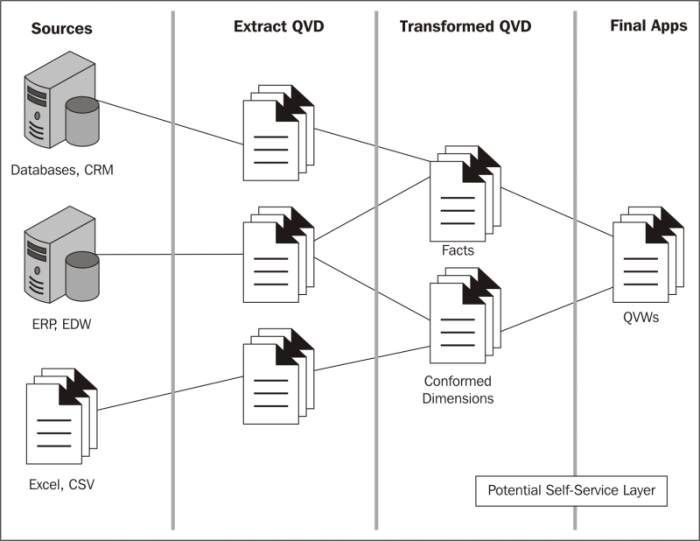Using an ETL approach to create QVD data layers
We now know that there are very good reasons for adopting an ETL approach to loading data in QlikView. Now we need to learn how we should go about implementing the approach.
Each part—Extract, Transform, and Load—has its own set of recommendations because each part has a very different function.
Essentially, the approach looks like this:

The approach can be explained as follows:
- Extract the data from data sources into QVDs.
- Transform the data from the initial QVDs into transformed fact tables and conformed dimensions.
- Load the transformed QVDs into the final applications.
The final two layers, the transformed ...
Get Mastering QlikView now with the O’Reilly learning platform.
O’Reilly members experience books, live events, courses curated by job role, and more from O’Reilly and nearly 200 top publishers.

